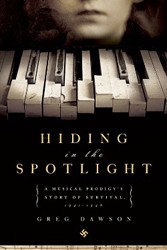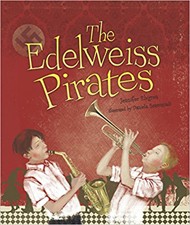Heinz Jakob “Coco” Shumann, born into a middle-class German family, entered the world in the tumult of Weimar Germany. The family prospered even in these difficult times, and little Heinz led a quiet life in his early years until the Nazis’ power began to increase. His father was a Christian by birth but had converted to Judaism after marrying his mother; Coco’s parents would be forced to give up their business with the passage of the Nuremburg Laws. Even though the family was not particularly religious they celebrated all important holidays in Judaism and Christianity. Coco, as he would come to be named by a French girlfriend, was interested only in the religion of music. At age 14 he was given a guitar and began his life-long love of jazz and swing music. As he grew into his teen years, Coco ignored the political situation around him and only thought about music. But soon he would not be able to disregard his precarious situation.
In Third Reich Germany, jazz was considered artfremd (alien) music and unacceptable in German culture. The Reichsmusikkammer was created to be the arbiter of German music and musicians, throughout most of the 1930s jazz was banned by the government. Coco Shumann joined the Berlin club scene that continued to play jazz music secretly. In the late 1930s and early 1940s the Nazis often looked the other way when patrolling the night streets of Berlin, but by 1943 there had been a complete crackdown on night clubs playing swing music.
At first Shumann was able to avoid detection as a Jew and hide in plain sight due to his last name and cherubic face, but secrets were hard to keep in Nazi Germany. An informant turned Shumann in to the Gestapo and he was ordered to the transports. Through the intervention of his father, Shumann was shipped to the Theresienstadt ghetto. This is the beginning of his story as the Ghetto Swinger. The music he loved would save him from the worst of the deprivations of the camps. The Nazis allowed prisoners to form bands to both entertain them and to play the death march music for daily transport arrivals. There are many documented reports of jazz in the camps such as Sachsenhausen as well as the Warsaw and Vilna ghettos. The Ghetto Swingers became one of the more well-known camp bands, but few of the members survived the Holocaust. Among the survivors were Coco Shumann and Martin Roman.
Shumann writes of being in Theresiendstadt: “When I played I forgot where I was.… We knew everything and forgot everything the moment we played a few bars.” For over 50 year after the war, Shumann had refused to speak about his experiences, wanting to forget as he had wanted to forget in the camps. While attending a meeting of the survivors of Theresienstadt, he had realized that silence was no longer an acceptable option and that he had to tell his story. This book was originally published in German in 1997, and represented the first time that Coco Shumann would discuss his experiences in Theresienstadt, Auschwitz, and Dachau.
The reader is able to sense the tension between the author’s reluctance to speak of the horror and the simultaneous compulsion to bear witness. Shumann’s story is 145 pages long, but there are only 30 pages devoted to his experience in the camps. The rest of the story is about his life before and after his internment. He admits it is difficult to talk about, and he is not sure of the appropriate way to do so. In the final pages he writes, “I am a musician, a musician who was imprisoned in a concentration camp, not a concentration camp inmate who also plays some music.” And perhaps this is the best way to understand the life of Coco Shumann.
Related Content:




